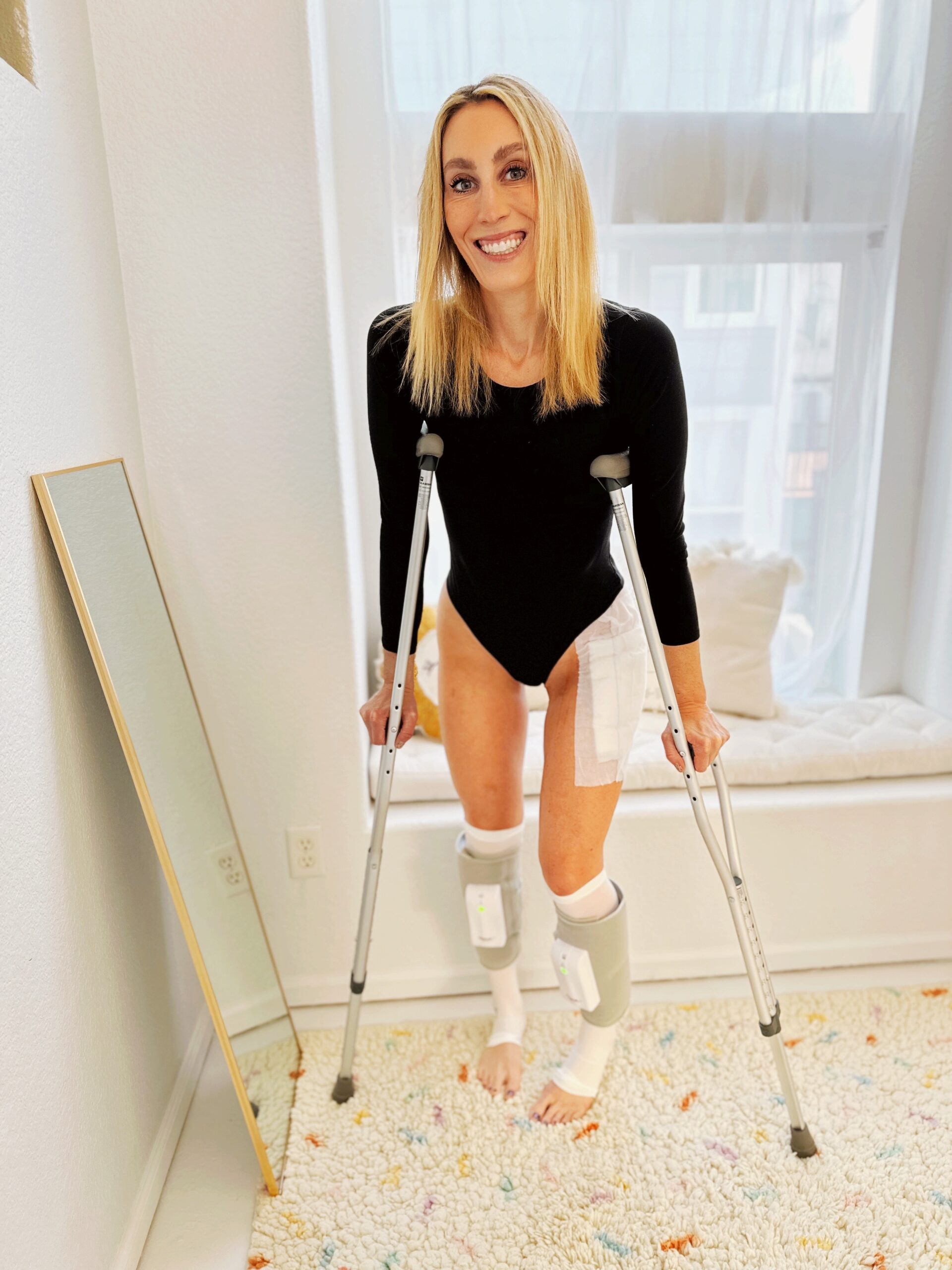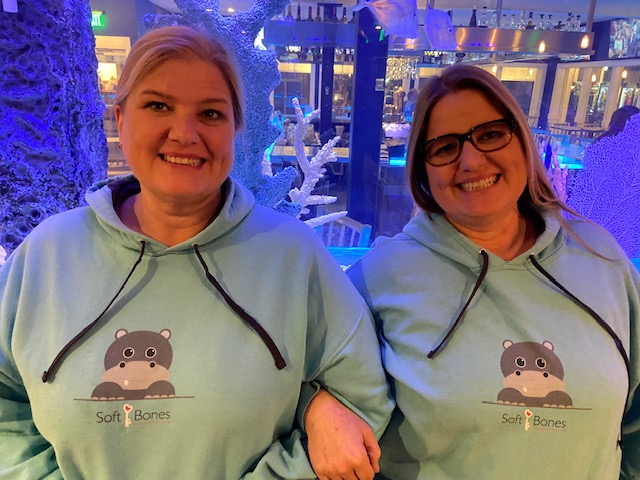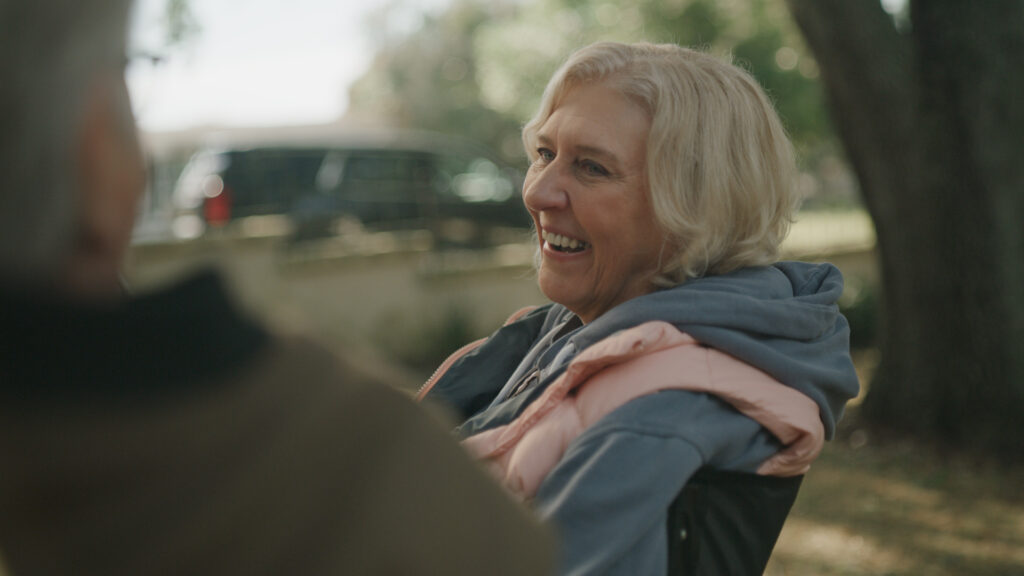Patient of the Month- Lindsey W.

If you would like to make a donation to Soft Bones in honor of Lindsey, please click the button below!

TW: Miscarriage
I lived a lifetime undiagnosed with hypophosphatasia. It’s honestly been traumatic and tragic, but by sharing my story, I hope to validate, encourage, and support others with HPP. You all matter. You are worthy of a correct diagnosis and appropriate medical care. Most of all, even if many of your symptoms are invisible, you should not feel invisible. You matter.
I had always thought there was something wrong with me. Yet, I internalized it. I thought all of my medical problems were my fault. I must’ve caused all of this, right? So, I spent a lifetime pushing myself incredibly hard through pain, blaming myself, smiling, and nodding when all I wanted to do was cry.
I must’ve been a wild baby and bit my bottle too hard to make my teeth fall out, right? I know I didn’t stretch enough so that’s why I got stress fractures or tore my hamstrings when running. Maybe I’m not eating right, and that’s why I get headaches. I must not be trying hard enough to stand with the correct posture. I’m probably not working out enough to correct all my muscular imbalances. I have no idea why I limp so badly. I should probably do double reps of physical therapy. I am not drinking enough water, that must be the cause of my kidney stones. I grew up on a farm with well water, without fluoride- that’s why I’ve had a lot of cavities. I wasn’t watching where I was going, that must be why I broke my nose. But, why have I had four miscarriages? What did I do to deserve this?

At 38 years old, a traumatic injury would finally put me on track to get a diagnosis.
After a difficult recovery from my thyroid and parathyroid surgery, I decided to go running every morning to rise above my circumstances and get myself in a better mental and physical state. The last day I ever ran, I felt great. My head was clear, and my lungs were strong. I wanted to run fast splits for all eight miles. With each mile, my times got slower and slower. I pushed myself, but my times were not what they should be. My leg was really hurting, but I was used to chronic and severe running injuries, so I pushed through. I finished my run and started to walk down the trail to my car, except I could barely walk. I almost couldn’t put weight on my leg. How could I run eight miles and not be able to walk? This had been my life experience, so I just pushed through and shook it off.
A couple of days later, I was limping in my driveway, barely able to put weight on my leg. My neighbor, who is a nurse, looked over at me and said you have a stress fracture. Why are you trying to walk? I thought to myself, this always happened to me in high school. I’d run until I couldn’t walk. I know it seems strange, but that is who I am.
Isn’t it ironic that someone had to tell me how I was feeling? The way I coped was by pushing myself through extreme pain. I learned that if I told doctors or other people about my pain, they wouldn’t believe me or help me, so why even ask for help?

Thankfully, I ended up in the office of an orthopedic PA that would change the course of my life. She immediately knew that it was highly likely I had a metabolic disorder, as a non-traumatic event led to a traumatic injury. Turns out, my leg was fractured in three places. I had one in my ankle, another in the middle of my tibia, and a grade 3 stress fracture under my knee. I truly almost ran until my leg broke in half.
Turns out metabolic panels are cheap and easy, and the results can come back in less than an hour. My alkaline phosphatase (ALP) was low and out of range. I’d been seeing my family care doctor for the past eight years. I had 46 pages of previous blood work showing low ALP levels on every other page. Could this actually be my answer, hiding in plain sight? She referred me to a specialized bone endocrinologist whom I waited months to see, all while my leg wasn’t healing, and when I couldn’t walk or take care of my four kids normally. She told me I looked too healthy to have such a rare disease. To her, my medical history and blood work didn’t line up with the perceived idea of a rare disease. My blood work from that appointment came back as low ALP and high B6, the two hallmarks of HPP. She referred me to a local geneticist, yet the earliest appointment was 12 months out. How was I going to get on Strensiq so I could heal and walk again? She told me no worries, just wait it out. Invisible.


While I was working on my genetic diagnosis, I was also working on testing my kids. One of my sons broke each leg by the age of three, another had early tooth loss, and my daughter had very short stature. The pediatric endocrinologist I was working with talked to her colleague to rush my appointment. I got to see the head endocrinologist in the state. She went over my blood work and my medical history. I have very bowed legs, which is one very visual symptom of HPP. Yet, she told me that because I was a good athlete and a regional champion in high school, I couldn’t have a severe form of this disease. She referred me to a highly specialized HPP doctor across the country. Invisible.
I figured if I had to wait 12 months for a genetic diagnosis, I might as well call some genetic departments across the country. I was able to fly to the University of Michigan a month later and received a genetic diagnosis a couple of weeks after. My kid’s genetic confirmation came back shortly. My three sons have hypophosphatasia. My daughter does not.
It has been a struggle and a fight, but I now have an excellent team of doctors. All of my specialists in my area had never had a patient with HPP, but they’ve researched the disease and learned along the way while treating me. They seem to constantly find something atypical in my case.
I have been on Strensiq consistently for 14 months. When I initially started Strensiq injections, I had significant reactions and it was a daily struggle. I stopped treatment but restarted with success. I am very dedicated to my injection schedule. I self-inject on early mornings before surgeries, or late nights after flights. I was developing Nephrocalcinosis before starting Strensiq. The flights across the country and every injection have been worth it.
My story with HPP never really ends. Living undiagnosed for nearly 40 years, I have a lot of degeneration in my spine. I am currently recovering from my second hip arthroscopy. I had hip dysplasia and FAI (femoroacetabular impingement). I am currently on the diagnostic odyssey journey for Chiari Malformation. My medical history is more of a book than a paragraph. The story isn’t over yet. It might just be beginning as I am now working on managing my degenerative spine.
If I had known who I was, I could’ve been so much gentler with myself. Cared for myself. Protected myself. A genetic disorder doesn’t have to define who we are. Yet, we need to know who we are. Hypophosphatasia isn’t the only part of ourselves that we hold, but it impacts every cell in our body. So, when we accept this we can fully accept ourselves.

I think it’s so important we share our stories so we feel less alone and less invisible. Genetic disorders are unique. We are often the patient and the caregiver since our kids can inherit the genetic mutation. Soft Bones has been an amazing support and community for me as I’ve walked this very lonely road. I hope my story helps give another HPPer the strength to keep going. You’re worth it.
Photo Credits of Lindsey in white dress: These photos are by @kathleenpeacheyphotograhy

Lindsey with three of our children who also have HPP.








Responses